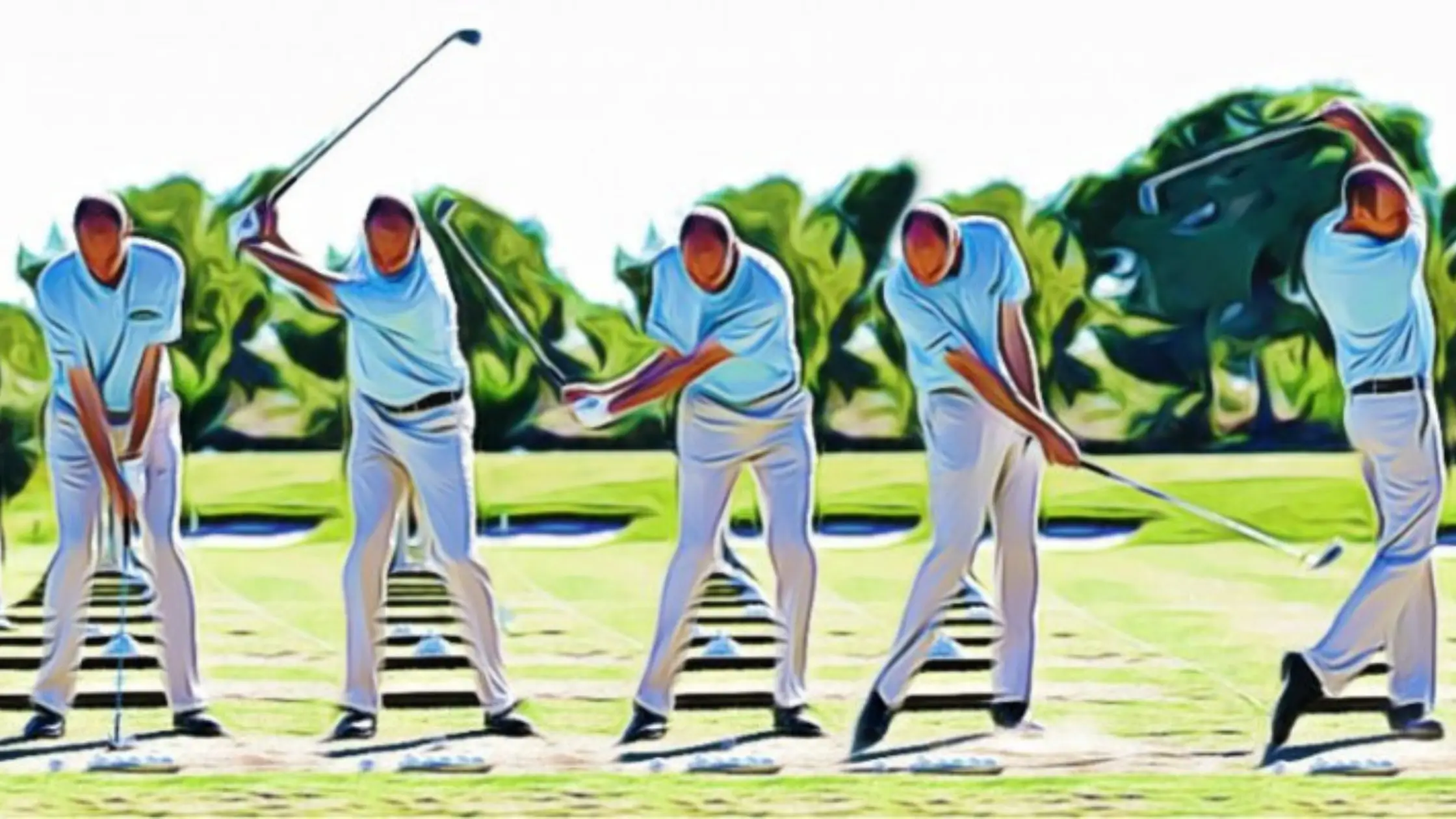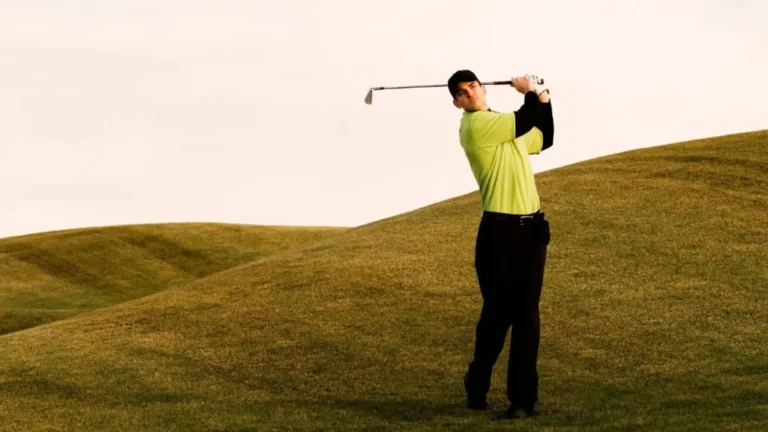The Complete Golf Swing Sequence Guide: 7 Steps
Want to Save this Guide?
Golfers are always looking for ways to add more yards to their drives. While there are many advanced techniques for maximizing driver distance, one of the simplest adjustments is to stand closer to the ball at address. This guide will walk through the step-by-step process of building a powerful driver swing sequence from the ground up when utilizing a more compact stance. Master this sequence, and you’ll be bombing drives beyond your playing partners in no time!
Step 1: Golf Swing Sequence – Address
The foundation of any effective Golf Swing Sequence with the address position, well before the club is even put in motion. When using your driver, begin by opening your stance slightly so that your left foot is lined up just slightly inside your shoulder line instead of even with it like irons. With weight even on both feet, bend knees and hips to achieve a comfortable and athletic posture.
Now comes the crucial adjustment – with the driver’s longer shaft, take a half-step closer to the ball at address. This places the ball forward near left heel while keeping spine, shoulders and feet aligned square to target line. With weight balanced and no excessive reach for the ball required, you are in the optimal launch position.
Step 2: Golf Swing Sequence – Takeaway
Initiate the backswing by turning shoulders smoothly so that arms and club align properly right from the start. Maintain spine angle and posture while letting the big muscles rotate the clubhead straight back with the face aimed at the ball. Weight should not shift much – remain centered on both feet.
After taking the clubhead immediately straight back for a foot, it can then be redirected vertically on plane. Power comes from winding torso against stable lower body.
Step 3: Golf Swing Sequence – Backswing
Now at the halfway point of the backswing, hinge wrists to continue lifting the club vertically to nearly shoulder height. Pressing left heel into the ground uses ground forces to fully coil torso against immobile hips and legs.
Finish the backswing with right shoulder lowered and the club pointing down the target line. This prepares the correct movements to drop into the slot on the downswing.
Step 4: Golf Swing Sequence – Transition
The transition triggers the entire downswing sequence in which stored power uncoils to accelerate the club into the ball. Initiate by bumping left knee towards target while keeping upper spine tilted away from ball. Hips and shoulders uncoil in sequence as club begins dropping into the inside delivery path.
Step 5: Golf Swing Sequence – Downswing
The downswing rapidly accumulates speed as the body uncoils out of its fully wound position. Dropping the club into the proper slot prevents casting and allows maximum acceleration. Maintain spine angle and posture while letting hips pull shoulders, which pull arms down into impact.
Striking down with rightward pressure asserts dynamic balance to strike the ball crisply before turf for consistent contact.
Step 6: Golf Swing Sequence – Impact
Impact is the snap movement that releases all built-up force to launch the ball at the bottom of the arc. Aggressively pull club down past ball into left heel with hips clearing out the way. Strike ball then turf as clubface whips left to square at precisely the point of collision.
This inside-out strike maximizes energy transfer for peak velocity off clubface just as ball contacts sweet spot. Chronic slices become powerful draws with this action.
Step 7: Golf Swing Sequence – Follow Through
With all power channeled horizontally through the ball, the club finishes low and left to maintain balance. Upper body resists flipping or spinning out early, instead fully releasing only once impact energy transfers leave the clubface recoiling left.
Spine angle holds until far hip clears to face target in balanced motion. This completes a powerful drive optimizing use of the ground and efficient sequences to maximize clubhead speed.
Should Your Golf Swing Sequence Change Based On the Club You Are Hitting?
While the full swing fundamentals remain the same across all clubs regarding grip, setup and general motion sequences, the length of the driver does require some subtle adjustments from shorter clubs.
At address, stand closer to the ball with driver to prevent excessive tilt, lean, and reaching. The wider arc also benefits from more shoulder turn, making the backswing a bit longer and wrist hinge a bit later.
The two main sequence differentials come at transition and impact. Driver needs a more aggressive weight shift to initiate downswing before releasing. Strike with driver is more horizontal across the ball than downward with irons and wedges.
Follow through also extends fuller to the finish with driver in order to allow the longer shaft and clubhead to fully release. Mastering these tweaks while keeping fundamentals steady is key for consistent shot shaping with every club.
Knowing Your Golf Swing Sequence Is No Use If You Have Bad Grip Fundamentals
Golfers can become too focused on textbook swing positions and sequences without verifying their grip allows the desired motions to manifest throughout. Without proper leverage and control, slices, hooks and tops still persist regardless of sequence soundness.
Takeaway, transition, and release precision stem from grip pressure and leverage acting upon the clubface. If these forces input improperly at address, compensations during the swing lead to off-center strikes
Ensure left thumb sits just right-of-center down the shaft, then connect remaining fingers in a relaxed hold. If grip problems still plague shots, check hand alignment, pressure balance, and grip size.
Now that setup and grip verify effective force input, commit to mastering the driver swing sequence pattern. When rehearsed in stages slowly, the full-speed motion will channel power directly into launch velocity and distance.







